"Armor" airborne assault
With all the specificity of airborne armored vehicles, its spectrum is quite wide, and we will limit ourselves to history a unique domestic family of BMD-BTR-D, especially since its progenitor, BMD-1, was 2009 years old in 40.
At the end of the 1940-x - the beginning of the 1950-ies, the Airborne Forces went through a massive rearmament. Including they received off-road vehicles and the first model of armored vehicles, designed specifically for the Airborne Forces, an airborne self-propelled artillery installation. However, this was clearly not enough.
In the first half of the 1960s, an infantry fighting vehicle was developed for motorized rifle units, and the question naturally arose about the same machine for the airborne troops. Then, behind the enemy’s rear lines would be not “light infantry”, but highly mobile mechanized units capable of operating in conditions of both conventional and nuclear war. However, much depends on the capabilities of the military transport aviation. The aircraft determines the requirements for weight, speed of loading, fastening, unloading or landing, the dimensions of its cargo compartment and hatch - the dimensions of the machine. BMP-1 (then still experimental "object 765") did not fit into them. Firstly, the combat weight of 13 tons allowed the transportation of the main military transport aircraft of the time, the An-12, only one BMP. Secondly, the An-12 provided the landing of a single cargo ship (an armament sample with landing equipment) weighing up to 10 tons, so that the mass of the sample itself could not exceed 7,5-8 tons. It was necessary to create a transport and combat vehicle for the Airborne Forces (Airborne Forces).
OKB-40 of Mytishchi Machine-Building Plant, headed by N.А. Astrov, who already had experience in creating ASU-57 and SU-85, design offices of the Volgograd Tractor Plant (VgTZ) headed by I.V. Gavalov and Leningrad All-Russian Scientific Research Institute-100 (later VNIItransmash). An important role in the fate of the machine was played by the “penetrating power” of the commander of the Airborne Forces, Army General V.F. Margelova, who was supported by the Deputy Minister, and then the Minister of Defense, Marshal A.A. Grechko. A number of designers of armored vehicles, representatives of the General Staff and the Ministry of Defense considered it practically unreal to create a machine with such an armament complex that fits within tight limits in terms of mass, dimensions and overloads during landing (up to 20 g). There was no clear idea: to make a car from scratch or to make the most of the aggregates of serial machines? But Margelov, having assured himself after meetings with the designers and leaders of the VgTZ in the practical possibility of creating a combat vehicle, raised the headquarters and the Scientific and Technical Committee of the Airborne Forces, chiefs of arms and services, and brought several ministries to work. VgTZ received a task to develop a machine that received the designation “915 object”. Interestingly, in 1942, in Stalingrad, the paratroopers of the 13-th Guards Division A.I. Rodimtsev, and it was in this city a quarter of a century later a fighting vehicle for paratroopers appeared.
This vehicle required: high maneuverability, as high as possible average technical speed over the terrain, confident overcoming without obstacles (due to its own buoyancy reserve) water barriers, as well as landing from military transport aircraft using its own parachute system and deploying an armament complex and several paratroopers with their weapons. It was natural to use for the "915 object" the same main armament as on the BMP - the smooth-bore 73-mm gun "Thunder" in the tower installation, supplemented by a machine gun and the Malyutka anti-tank guided missile. The car was supposed to serve also as a base for a family of armored vehicles (from a light tank to a tanker). What has been implemented, we will find out further.
New armor and new suspension
The designers went for the use of a number of fundamentally new solutions for the domestic armored vehicles. One of the main ones was the widespread use of aluminum alloys - the Moscow branch of the VNII-100 (later the VNII of Steel) did a great job here. Aluminum armor alloys are more expensive than steel ones, but they provide a number of advantages. Aluminum armor with less weight requires a greater thickness of the armor details, so that the rigidity of the body is higher than that of the case of relatively thin sheets of steel armor. And when it comes to anti-bullet protection, the body is lighter than with steel armor equal resistance.
With the help of VNIITransmash specialists, an individual hydropneumatic suspension was developed for the new machine. More precisely, it is a pneumatic suspension (gas serves as an elastic element) with the transmission of force through a liquid. Each suspension unit serves as a spring and shock absorber, the suspension is compact, and through adjusting the pressure, the clearance of the machine can be varied over a wide range. The latter allows you to place the car on the means of landing, "pull up" the chassis to the body when driving afloat, facilitates the shelter of the car on the ground.
In addition, the car received a very dense layout scheme, the capacity was limited to seven fighters, compensating for this with their “active” placement: in addition to the gunner’s operator, two machine gunners could be firing on the side of the driver, three more paratroopers had ball mounts for their machines. For the movement afloat, the car received two water jets.
The commander of the Airborne Forces did everything to speed up the progress of work. Already 14 on April 1969, the BMD-1 (“airborne combat vehicle”, or “airborne combat vehicle”) was adopted. Its production unfolded on VgTZ. The BMD still surprises with its compactness, comparative ease of maintenance and reliability (which is understandable - the landing party doesn’t have logistical services and workshops at hand), excellent driving performance.
Since 1970, KB VgTZ headed by A.V. Shabalin, and further work on the BMD-1 and its modifications was under his leadership. Commander BMD-1K, command and control vehicle BMD-1KS "Sinitsa" for the battalion control link soon appear, in BMN-1978, BMD-1P and BMD-1KP with the ATGM 9KNNXX "Fagot" churp "chorus" chorus "chorus" chorus "chorus" chorus "chorus" chorus chorus grenade launchers for quick installation of smoke screens.
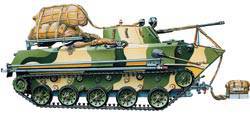 BMD-2 with parachute-reactive system PRSM-925. Fighting mass BMD-2 - 8 t, crew - 3 person, landing - 4 person
BMD-2 with parachute-reactive system PRSM-925. Fighting mass BMD-2 - 8 t, crew - 3 person, landing - 4 person What would reset it?
In parallel with the creation and mastering of mass production of BMD, work was under way on the means of its landing: only a single complex “combat vehicle — vehicle — landing craft” could ensure the effective use of the new combat capability. At the first stage of operation of the BMD-1 and BTR-D, parachute platforms PPNNXX-128 and later P-5000 and P-7M with multi-dome parachute systems were used for their landing. In the course of the Dvina general military exercise in March 7 of the year in Belarus, along with more than 1970 paratroopers, more than 7000 units of military equipment were thrown out - with the help of multi-domed parachute systems and airborne platforms. It is claimed that it was during these exercises that General Margelov expressed the idea of dropping the crew along with the BMD. Usually the crews leave the plane after “their” BMD so that they can watch them in flight. But the crew is scattered in a radius from one to several kilometers from their car and after landing, it spends a lot of time searching for the car, preparing it for movement, especially in fog, rain, at night. Marker radio transmitters on platforms solved the problem only partially. The proposed joint landing complex, when BMD were deployed on one platform and the crew with personal parachutes, was rejected. At the beginning of 150, Margelov demanded to work out the landing of the crew inside the car in order to shorten the time between dropping and starting to move - the time of the greatest vulnerability of the landing force.
After a series of experiments (first with dogs, and then with people-testers) on January 5 of the year 1973, based on the 106 airborne division, conducted the first reset of the “Centaur” system - BMD-1, equipped with two Kazbek-D seats (simplified version of the cosmonaut Kazbek-U chair) on the П-7 platform. The crew of the BMD-1 consisted of Lieutenant Colonel L.G. Zuev and senior lieutenant A.V. Margelov (younger son of the commander). The results clearly showed that the crew would not only survive, but also retain combat readiness. Then discharges on the "Centaur" with military crews were carried out in each parachute regiment.
The Centaur system showed a high degree of reliability, but remained unique, purely Russian. It is known that in the year 1972, when in the USSR they were preparing for the first discharge of people on the Centaur, the French decided to conduct their experiment. A prisoner sentenced to death was put in a combat vehicle that was dropped from an airplane. It crashed, and in the West for a long time it was considered inexpedient to continue the development work in this direction.
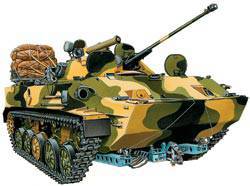 BMD-3 with Bakhcha tamper-free system PBS-950. Fighting mass BMD-3 - 12,9 t, crew - 3 person, landing - 4 person
BMD-3 with Bakhcha tamper-free system PBS-950. Fighting mass BMD-3 - 12,9 t, crew - 3 person, landing - 4 person The next step was free-form systems. The fact is that the preparation for landing BMD on the platform with the ISS also required a lot of time and money. Platform preparation, loading and fixing of military equipment on them, transportation of equipment on platforms to the airfield (at a very low speed), concentration to aircraft parking areas, installation of a parachute system, loading into aircraft took, according to exercise experience, up to 15 — 18 hours. Freeform systems significantly accelerate the preparation for the landing and the preparation of the machine for movement after landing. And by the beginning of the 1980-ies in the Feodosia branch of the Research Institute of Automatic Devices, the strapless PBS-915 parachute system for BMD-1P and BMD-1PK was developed. And December 22 1978 of the Bear Lakes took place the first reset of the system “Centaur-B” on a free-form system with lining cushioning. The army was lawfully proud of the free-form system, so that already in 1981, it seemed to be casually shown in the famous movie “Return Motion”.
BMDs in parks are usually stored with an airborne system placed on the hull - this reduces the time between receiving a team and loading vehicles ready for landing into an aircraft. The main force of the landing is surprise, and this requires a quick response.
An important step in the development of landing facilities was the emergence of parachute-reactive systems (ORS), in which, instead of a parachute platform with several domes, a single dome and a solid-fuel jet brake engine were used. The main advantages of the ORS are the reduction of preparation time for landing and the actual landing (the speed of the object’s descent to the ORS is about four times higher); after landing, there is no “white swamp” around the huge parachutes around the car (the domes and slings happen to be wound on rollers and caterpillars). For landing BMD-1 and machines on its base is the system PRSM-915. Abroad, as far as we know, serial analogs to our PRS and free-form systems have not yet been created.
The IRS also became the basis for landing the crew inside the car. The project was named Reaktavr ("reactive" Centaur "). 23 January 1976 of the year passed the first discharge to the PRSM-915 BMD-1 machine with a crew - Lieutenant Colonel L.I. Shcherbakov and Major A.V. Margelov. After landing, the crew, in less than a minute, put the car on alert, then performed the BMD shooting exercises and driving over obstacles. Note that by 2005, more than 110 people had landed inside the vehicle (for comparison, about four times more people in space since 1961).
BMD-4. Combat weight - 13,6 t, crew - 2 — 3 person, troops - 5 person
Family extension
The BMD-1 changed the appearance of the Soviet Airborne Forces, giving them qualitatively new capabilities, but with limited capacity and payload alone could not solve the problem of increasing the mobility of the landing force units with anti-tank, anti-aircraft, control and support. For the installation of a variety of weapons and controls in addition to the BMD-1 needed a more spacious armored vehicle. And 14 in May 1969 of the year - just a month after adopting the BMD-1 - the Military-Industrial Commission of the USSR Council of Ministers decided to create prototypes of an armored personnel carrier and a complex of command and staff vehicles for the airborne forces.
The KB VgTZ based on the BMD-1 was developed by an amphibious armored personnel carrier, designated the “925 object” (in parallel, the civilian version was developed — the 925G transporter ”). In 1974, it was put into service under the designation BTR-D (“amphibious armored personnel carrier”) with the task of transporting personnel, evacuating the wounded, transporting weapons, ammunition, fuel and lubricants and other military goods. This was facilitated by the elongation of the chassis - by one roller from each side - and the increased dimensions of the hull with a wheelhouse. Capacity increased to 14 people (or two crew members and four wounded on a stretcher).
On the chassis, the BTR-D developed a family of armored vehicles to equip virtually all branches of the armed forces and services that are in the airborne forces. In addition, the BTR-D and BTR-ZD were to serve as tractors for the 23-mm anti-aircraft gun ZU-23-2, but during the exercises the paratroopers began to install the ZU-23-2 directly on the roof of the hull. So, despite the objections of representatives of the manufacturer, appeared self-propelled anti-aircraft installation. ZU-23-2 is mounted on the roof on pedestals and secured with rope extensions and can fire at air or ground targets. In their own way, such “homemade” operations were “legitimized” by the fighting in Afghanistan and Chechnya, where cars escorted columns. There was also a factory version of the installation with a more durable mounting of the charger on the case, as well as with the option of armor protection calculation.
Finally, on the same chassis in 1981 was created 120-mm self-propelled gun 2S9 "Nona-S" and point reconnaissance and fire control of artillery 1V119 "rheostat" for the "Nona" batteries, as well as their modernized versions 2S9-1M and 1V119-1 .
The BTR-D and the vehicles at its base went through a number of upgrades, including the replacement of the old means of communication in the second half of the 1980's. For the landing of the BTR-D, the parachute-reactive system PRSM-925 is intended, for Nona-S - PRSM-925 (2СXNNXX).
BTR-D with anti-aircraft gun ZU-23-2
"Beemdeha second"
At the beginning of the 1980-s, the BMDs confirmed their good driving performance in the mountains of Afghanistan, when vehicles with troops and cargo on the armor took relatively steep climbs, inaccessible to the BMP-1 and BMP-2. But the small elevation angles and the sighting range of the 73-mm cannon did not allow effective fire on the mountain slopes. The re-equipment of the BMD has already been carried out, but the experience of Afghanistan has accelerated their implementation. As a result, the BMD-2 with the 30-mm 2А42 automatic cannon and a machine gun paired with it in the single-seater turret and the Fagot and Konstant ATGM launcher were paired. A number of changes were made, and in 1985, the BMD-2 (“916 object”) was adopted by the Airborne Forces, in the 1986-m - the commanding BMD-2К.
In general, the fate of the BMDBTR-D family of vehicles was such that for their intended purpose - airborne vehicles - they were used only in training exercises. The military landing of the 25 — 26 on December 1979 of the year on the airfield of Kabul was carried out by landing. "Beamdashki" allowed the paratroopers and special forces to quickly advance to the objects and block them. In general, BMD worked as "normal" BMP and BTR. The experience of Afghanistan has generated a number of changes in the design of machines. For example, BMD-1P and BMD-1PKs were used to remove racks for the ATGM launcher, and instead of them, the AGS-30 “Flame” automatic grenade launcher XMNUMX, popular in the mountain war, repeated on the roof of the tower. and during the Chechen campaign. On the BMD put in the troops and other popular weapon - Large-caliber machine gun NSV-12,7.
At checkpoints, the BMD was often placed in a shelter, and when attacked by dushmans, this very mobile machine quickly rolled out to an elevated point, from where it opened fire. The allocation of BMD for tracking relatively slow-moving convoys was ineffective: easy booking and low mine resistance do not correspond to similar tasks. The low mass made the car very sensitive to close landmine explosions. Another problem emerged - when the mine exploded the aluminum bottom, sagging like a membrane, it hit the ammunition located directly above it, which caused the self-killer of fragmentation grenades to be arrested, and after eight seconds the detonation load detonated, leaving no time for the crew to leave the car. This accelerated the withdrawal of BMD-1 from Afghanistan.
Aluminum wheels of road wheels did not differ in durability on rocky roads and on roads with concrete pavement, the roller had to be completely changed. It was necessary to replace the aluminum track rollers with steel with an aluminum sleeve. Dust from the air often got into the fuel system, which required the installation of an additional fine filter.
And soon the paratroopers in Afghanistan even moved from the BMD to the BMP-2, the BTR-70 and the BTR-80 - primarily because of the high vulnerability of the BMD in explosions.
After Afghanistan, BMD and vehicles at its base had to fight already in their native land. Politicians threw paratroopers (as the most combat-ready units) to extinguish inter-ethnic clashes and riots of the separatists. Since 1988, paratroopers have been actively involved in more than 30 operations, commonly referred to as “resolving national and military conflicts.” BMD-1, BMD-2 and BTR-D had to patrol the streets and guard objects in Tbilisi in 1989, in Baku and Dushanbe in 1990, in Vilnius in 1991, and even in Moscow in 1991 and 1993 . At the end of 1994, the first campaign began in Chechnya, and BMD-1 was driven back to battle. To enhance protection against cumulative grenades and bullets of large-caliber machine guns on the BMD-1, they put and hung boxes with sand, additional spare parts, etc. In September, the 1999 BMD-1 and BTR-D participated in the battles in Dagestan, and immediately followed this second Chechen campaign.
As for the BTR-D and the vehicles at its base, they remained loyal airborne workhorses. Moreover, the cars are designed for delivery by military transport planes and heavy helicopters, they are excellent “pull” even in difficult road conditions and in the mountains, they are reliable. Nona-S and BTR-D with ZU-23 solved the tasks of direct fire support units.
BMD-1 was supplied abroad limitedly (to Angola and Iraq), unless, of course, we count BMD left in the now “independent” republics (Ukraine, Belarus, Moldova). Iraqi BMD-1 in 2003, fell into the hands of American invaders.
The results of the second campaign in Chechnya, the experience of the Russian peacekeepers in Abkhazia confirmed the long-established demands for increasing the firepower and security of the BMD.
Heirs time
By the end of the 1970-s, it became clear that the possibilities for upgrading the BMD-1 and the BTR-D to accommodate more powerful weapon systems and special equipment were exhausted. At the same time, the Il-76 military transport aircraft, which had become the main airborne unit, and the new airborne landing gear “softened” the mass and size requirements of the vehicles — the landing of monoloads weighing up to 76 tonnes from the Il-21 was completed.
The machine, which became known as the BMP-3 with a new weapon system (100-mm and 30-mm cannon, machine guns, guided weapon complex), was originally developed to arm the Ground Forces, Airborne Forces and Marines. This was manifested, in particular, in the design of the chassis with variable ground clearance and in limiting the mass of the machine to 18,7 tons. However, the airborne career of the BMP-3 did not take place. The 1990-ton BMD-13, created under the direction of A.V., entered service for the Airborne Forces in 3. Shabalina on VgTZ.
Airborne SPTP 2C25 "Sprut-SD". Combat weight - 18 t, crew - 3 man, 125-mm tank gun
Complex machines armament decided not immediately, but eventually settled on a combination of 30-mm automatic cannon 2A42 and coaxial 7,62-mm machine gun in the turret, launcher for anti-tank 9M113 (9M113M) on the tower, as well as - 5,45-mm machine gun and 30-mm automatic grenade launcher in front of the hull. The appearance of the installation under the 5,45-mm light machine gun is characteristic - the paratroopers have long been asked to put an installation under the light machine gun on their combat vehicle. There are three installations in the sides and for assault rifles. The disembarking of the car is still made up and back - on the roof of the engine compartment. The tower became a double: the commander, having settled next to the gunner-operator, got a better overview and can take control of the armament. Equally important is the automation of the transmission and a number of mechanisms. Initially, the BMD-3 caused a lot of complaints (which is usually for a new machine), but those who exploited it noted that it was much easier to manage than the BMD-1 and BMD-2. The control levers here changed the steering wheel.
In the undercarriage of BMD-3, Volgograd tank builders returned to single-pitch road wheels - hollow rollers increase buoyancy and stability afloat. The suspension is also hydropneumatic.
The movement of the machine afloat required a number of special solutions. The fact is that the Chelyabinsk diesel, corresponding to the task for most of the characteristics, exceeded the required mass by almost 200 kilograms. Afloat it gave a big trim aft. In addition to other inconveniences, this did not allow fire afloat along the coast along the water's edge. To “raise” the stern, the opening angle of the water jet valves was limited so that the vertical component of the reactive force was created, and the spare parts and accessories boxes installed at the stern were turned into floats.
Simultaneously with the BMD-3, for its landing, a free-form system PBS-950 with the parachute system MKS-350-12М was created on the basis of universal domes. 20 August 1998 of the year during the exercise of the 104-th parachute regiment of the 76-th airborne division reset BMD-3 on the PBS-950 system with crew and troops in full force. A non-parachute discharge of BMD-3 (without crew) from an extremely low altitude was also tested, although this method of landing technology is not popular.
Meanwhile, the BMD-4 appeared on the modified chassis. The main innovation was the combat module developed in Tula Instrument Design Bureau with a turret installation of twin guns - 100-mm 2А70 and 30-mm 2А72 - according to the BMP-3 weapon system. The 100-mm cannon can fire with a high-explosive fragmentation projectile or an 9М117 ATGM (9М117М1-3). The most controversial reviews can be found on the capabilities and quality of the BMD-4: some indicate that the chassis of the vehicle as a whole is communicated, and the BMD-4 armament complex needs to be improved, others are completely satisfied with the armament and instruments, but need to be finalized the chassis. However, the number of BMD-3 and BMD-4 in the troops is relatively small and the experience of their operation has not yet gained sufficient "statistics". In general, experts agree that the BMD-3 and BMD-4, as new-generation vehicles, require more qualified personnel for their operation (and this is a problem for the modern Russian army while reducing the level of education).
Now VgTZ entered the concern "Tractor Plants", which includes the manufacturer BMP-3 "Kurganmashzavod." And in 2008, at Kurganmashzavod, they demonstrated a BMD-4М car with the same armament complex, but on a different chassis based on the BMP-3 units and assemblies. For which of the “fours” the future is unclear.
Analogs and relatives
Amphibious armored vehicles, which are in service with our army, still have no direct analogues abroad, although the work in this direction has been going on for years. For example, in Germany, the Wizel and Wiesel-2 combat amphibious assault vehicles are in service. But these are machines of a different class: Wiesel is a kind of rebirth of tanket with a 2 — 3 human crew, self-propelled platform for Tou ATGM, 20-mm automatic cannon, anti-aircraft missile system, radar or special equipment - to choose; The Wizel-2 is a sort of lightweight limited-capacity BTR and a platform for heavier weapons. Most closely to the idea of the BMD-BTR-D came the Chinese, who recently presented their own airborne combat vehicles WZ 506.
As for the modern fleet of combat vehicles of the domestic airborne troops, the main ones are BMD-2, BTR-D and BMD-4. But it is assumed that the "old" BMD-1, for obvious reasons, will remain in service until the 2011 year.
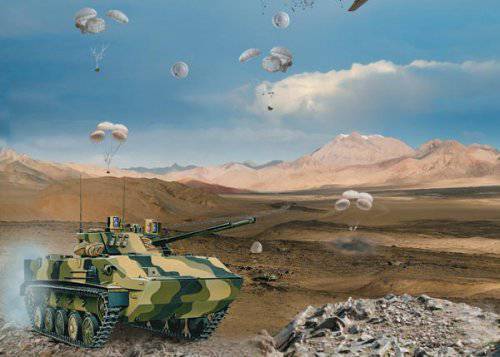
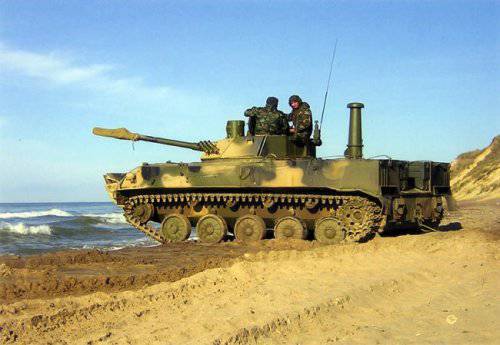
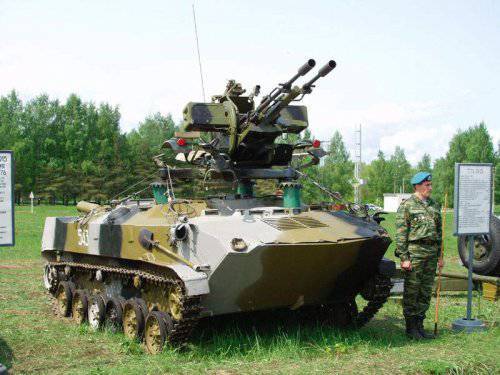
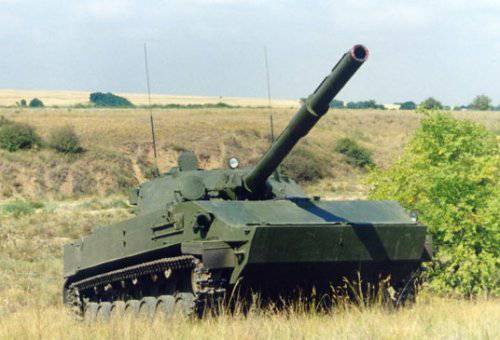
Information